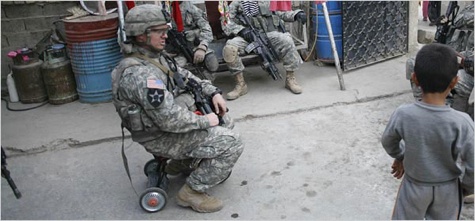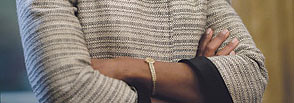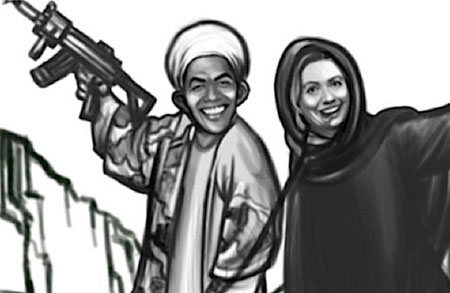Notes
Driving The Surge
I credit NYT reporter Damien Cave, embedded with U.S. surge troops in Baghdad, for offering the most objective reporting he can.
As supposedly joint U.S. and Iraqi teams of soldiers sweep through homes in Baghdad’s Shiite neighborhoods, Cave writes (and even quotes soldiers) on the low number of Iraqi personnel involved; doubts about the Iraqi government’s ability to produce more troops; the lack of resistance being encountered; and the internal presumption that the bad guys (once again) have temporarily disappeared, assuming that the American’s will (ultimately, and again) move on.
I take no issue with the specific journalists as they cover the sweep. What I am concerned with, however, is the conflict of interest — especially at the visual level. On the one hand, the hopes of the participants, the bond between soldiers and journalists, and the authority of the U.S. military is pulling for a prettier view. On the other hand, the bleeding futility — evidenced by a mission as strategically suspect as it is politically motivated — shouts out for serious contrast.
So, what visually nets out?
In the past two days, the answer is: children.
In yesterday’s lead NYT "surge" image, we saw a young girl standing calmly by, as if having an approvingly normal conversation with whom? (You imagine, a solder.) In the foreground, meanwhile, an Iraqi policeman (who may or may not be conventionally dressed for world-wide circumspection) tries to kick open a door under the supervision of an American soldier. (You know it’s an American because, for one thing, he’s got the big hardware.)
The image above is today’s shot — packaged with an article about Moktada al-Sadr supposedly on the run in Iran. The caption reads: "An American soldier rested on a tricycle on Thursday during a lull in searches of a Baghdad neighborhood. The soldiers were looking for weapons."
After the al-Sadr details, the article offers some more specific reference. Cave writes:
For the second day of their sweep, American troops found almost no resistance, instead mostly encountering compliant residents and children begging for attention. In the afternoon, some troops decided to cruise through nearby Sadr City. From the hatch of a 19-ton Stryker armored vehicle, the district appeared far less friendly than the three nearby neighborhoods had. There were lots of antagonistic hand gestures, hard stares and grimaces from young men.
Of course, soldiers need to rest, and reach out. But the picture, besides softening us up again with "just soldiers and kids," is a perfect representation of the conflict above. On one hand, we have the savior’s empathy. We have the soldier at the kid’s level, even sharing his trike, having a conversation. Simultaneously though — with the kid’s back to us, so we can’t tell where he’s coming from — we know we sat on this country and overwhelmed its domestic life. … And it was a juvenile operation, to boot.
The other thing about this image is that we’re not the only audience. With the gate to this courtyard open, we can see people standing beyond, looking in. Just like the person (a young man?) in yesterday’s photo observing from across the street, they have a better view than we do. And you wonder, if it’s this suspect to us, what does it look like to them?
(image: Max Becherer/Polaris, for The New York Times. Published: February 16, 2007. nytimes.com)



Reactions
Comments Powered by Disqus